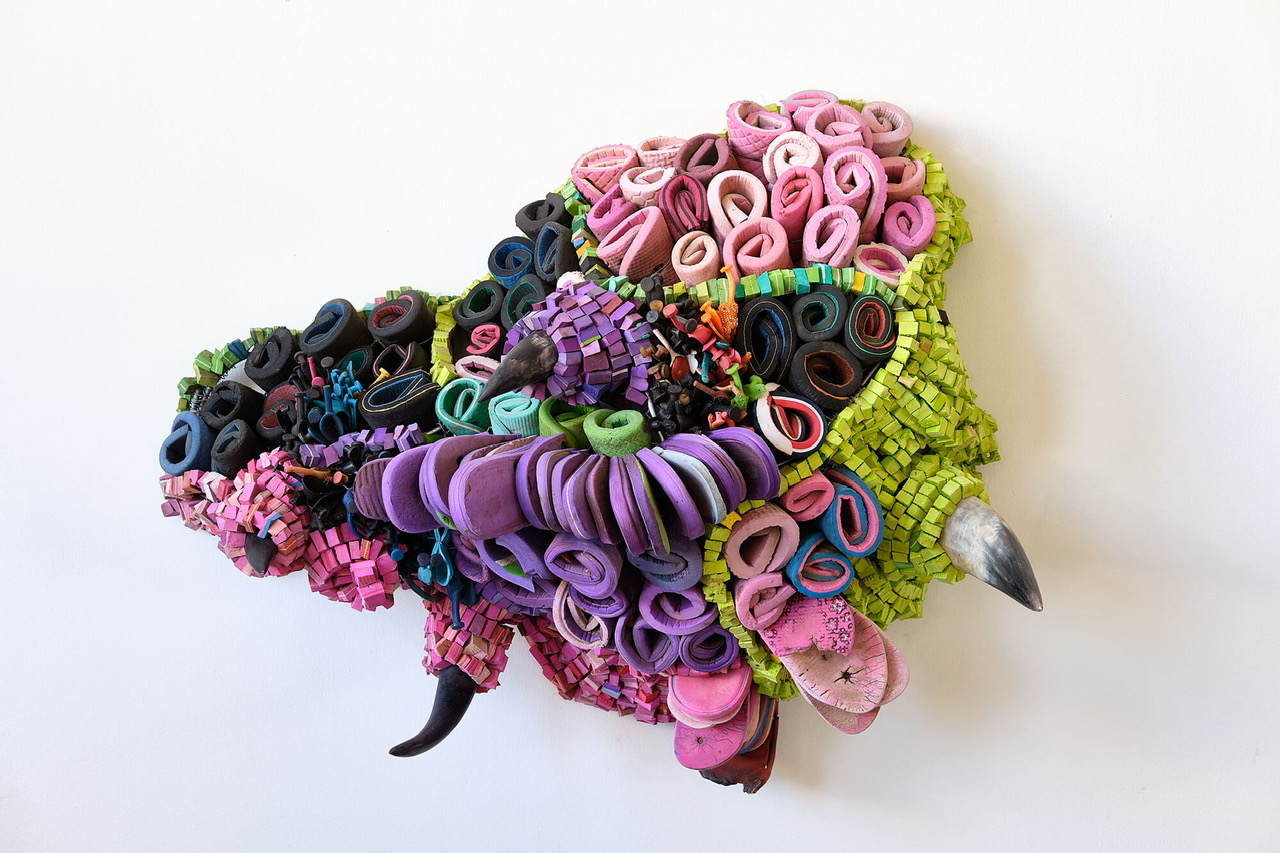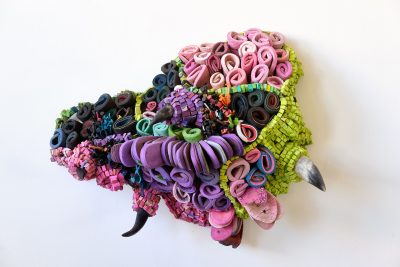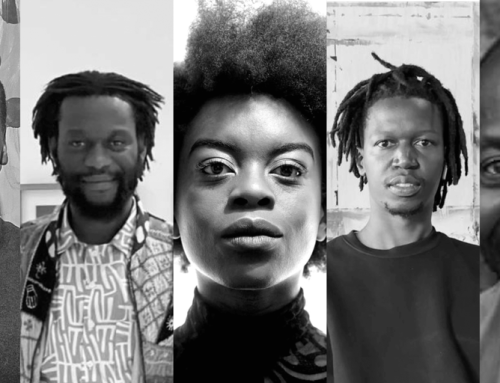
Contemporary African Sculpture: Bridging Tradition and Modernity

Zimbabwean sculptor Takunda Billiati who uses found and recycled objects including Flipflops, rubber, wire and cow horns.
African sculpture has long been a prominent and influential art form, traditionally serving as a means of cultural expression, religious devotion, and social commentary. Today, contemporary African sculpture continues this legacy, but with a distinctive fusion of tradition and modernity. It reflects the complex realities of modern African societies while engaging in conversations about global issues. This artistic evolution demonstrates the resilience and creativity of African sculptors, who draw from rich cultural heritages and combine them with innovative techniques and new materials to produce groundbreaking work.
Roots in Tradition
Contemporary African sculpture is deeply rooted in traditional African artistic practices, where sculpture often held spiritual and ceremonial importance. Historically, African artists carved figures, masks, and totems from wood, stone, or metal, using these works to embody ancestors, gods, or spirits. The traditional role of African sculptors was not only to create aesthetically pleasing objects but also to craft powerful representations of collective identity and belief systems.
For example, the Dogon sculptures of Mali are known for their spiritual depth, while the Ife heads from Nigeria exhibit remarkable technical sophistication. These works were not merely decorative but were embedded in the everyday lives of African people, playing roles in rituals, communication with the divine, and social organization. Contemporary African sculptors honor these legacies by incorporating symbolic elements, iconography, and themes that reference ancestral beliefs and cultural histories.
Material Innovation
One of the hallmarks of contemporary African sculpture is the inventive use of materials. While traditional African sculptors worked predominantly with wood, stone, and metal, contemporary artists explore a wide range of media, from recycled materials to industrial waste. This innovative use of materials is often driven by both necessity and artistic vision, reflecting Africa’s modern realities, including urbanization, environmental degradation, and the resourcefulness of its people.
One striking example is the work of Ghanaian artist El Anatsui. Known for his monumental sculptures made from discarded bottle caps, El Anatsui creates fluid, tapestry-like sculptures that challenge traditional notions of what sculpture can be. His works reflect not only the environmental impact of consumerism but also the cultural and historical significance of trade and exchange across the African continent.
Similarly, Kenyan artist Cyrus Kabiru uses discarded metal and electronic waste to craft intricate sculptures, particularly his famous eyewear series. Kabiru’s work reflects on the urban environment, consumerism, and the resilience of African people in the face of adversity. The use of recycled materials in African sculpture is not just a reflection of limited resources but a commentary on modern society and an expression of the African philosophy of finding beauty and value in all things.
Exploring Identity and Representation
Contemporary African sculpture is often a platform for exploring themes of identity, migration, and the post-colonial African experience. Many artists engage with the complexities of African identity, both on the continent and in the diaspora, by addressing issues such as gender, race, and the legacy of colonization.
South African artist Nandipha Mntambo, for example, uses sculpture to challenge conventional representations of women and femininity in African art. Working with cowhide and other organic materials, Mntambo explores the intersection between the human and animal worlds, raising questions about identity, transformation, and the body. Her works invite viewers to reconsider traditional gender roles and the boundaries between nature and culture.
Another prominent figure in contemporary African sculpture is Yinka Shonibare, a British-Nigerian artist whose work interrogates colonial history and the complexities of cultural hybridity. Shonibare’s sculptures often incorporate mannequins dressed in brightly colored African textiles, juxtaposed with symbols of European colonialism. Through these provocative installations, Shonibare engages with themes of power, race, and globalization, urging viewers to reflect on the legacies of colonialism and the cultural entanglements that define the modern world.
Globalization and the African Diaspora
The global nature of contemporary African sculpture is another defining characteristic of the movement. African artists are increasingly exhibiting their work on the international stage, contributing to a broader understanding of African art beyond the stereotypical or exoticized lens. Many sculptors from the African diaspora, like Wangechi Mutu and Kehinde Wiley, fuse African traditions with global influences, creating works that speak to both African and international audiences.
Wangechi Mutu, a Kenyan-born artist based in New York, often combines sculpture with other mediums like painting and video to address issues of identity, gender, and post-colonialism. Her works challenge Western perceptions of African art and culture, while simultaneously critiquing the social and political landscapes of both Africa and the West.
Kehinde Wiley, known for his vibrant portraits of Black figures, also delves into sculpture, reimagining classical European statuary through a contemporary African lens. His sculptures often depict Black men and women in poses associated with European nobility, challenging traditional narratives of race, power, and representation. By blending African and European artistic traditions, Wiley’s work underscores the interconnectedness of global cultures and histories.
Moving Forward
Contemporary African sculpture is a dynamic and evolving art form that bridges the gap between tradition and modernity. It reflects the diverse experiences, histories, and cultures of the African continent, while also engaging with global issues such as identity, migration, and environmental sustainability. African sculptors, both on the continent and in the diaspora, are redefining what sculpture can be, using innovative materials and techniques to create works that resonate with local and international audiences.
As African sculpture continues to gain recognition on the world stage, it remains a testament to the creativity, resilience, and complexity of African societies. By blending the old and the new, contemporary African sculptors are not only preserving their cultural heritage but also pushing the boundaries of artistic expression in ways that challenge, inspire, and transform our understanding of art in the modern world.
[/fusion_text][/fusion_builder_column][/fusion_builder_row][/fusion_builder_container]
